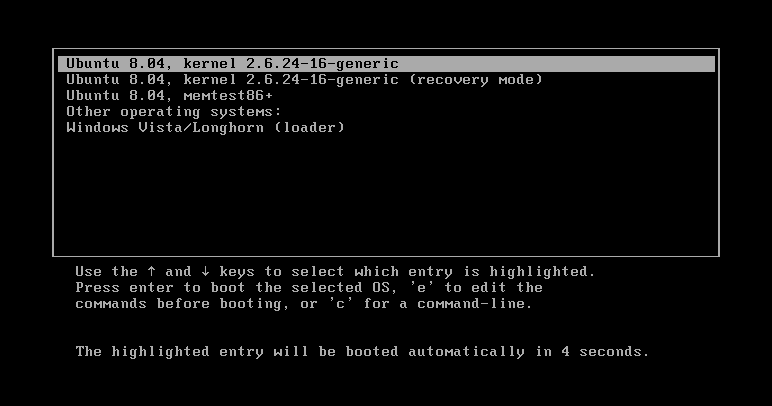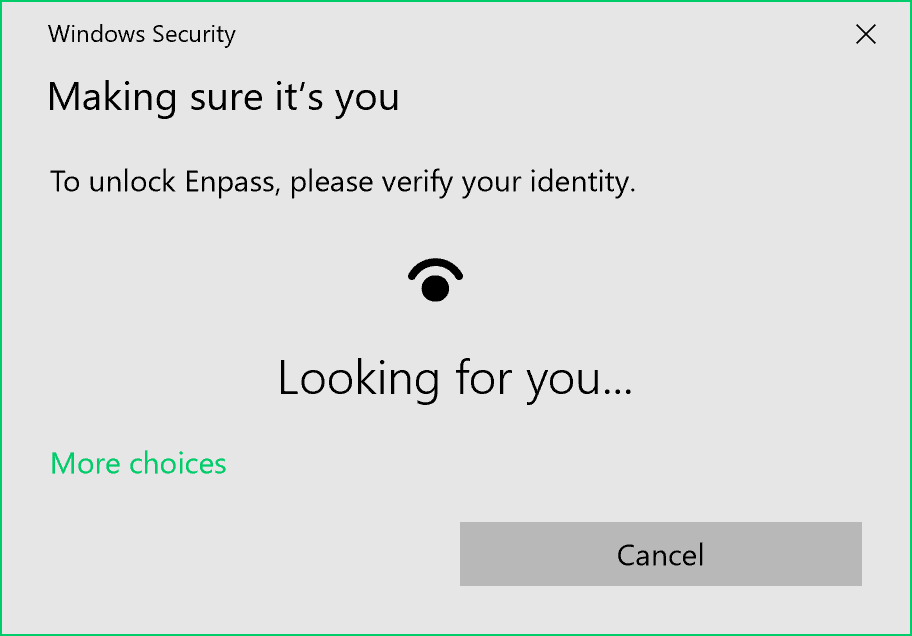|
Microsoft Reserved Partition
A Microsoft Reserved Partition (MSR) is a partition of a data storage device that uses the GUID Partition Table (GPT) layout. The Windows operating system uses this partition for compatibility purposes. No meaningful data is stored within the MSR. Rather, when compatibility needs arise, Windows shrinks this partition to make way for other special-purpose partitions, which may contain data. The GPT label for this partition type is E3C9E316-0B5C-4DB8-817D-F92DF00215AE. Purpose Formerly, on disks formatted using the master boot record (MBR) partition layout, certain software components used hidden sectors of the disk for data storage purposes. For example, the Logical Disk Manager (LDM), on dynamic disks, stores metadata in a 1 MB area at the end of the disk which is not allocated to any partition. The UEFI specification does not allow hidden sectors on GPT-formatted disks. Microsoft reserves a chunk of disk space using this MSR partition type, to provide an alternative da ... [...More Info...] [...Related Items...] OR: [Wikipedia] [Google] [Baidu] |
Partition (computing)
Disk partitioning or disk slicing is the creation of one or more regions on secondary storage, so that each region can be managed separately. These regions are called partitions. It is typically the first step of preparing a newly installed disk after a partitioning scheme is chosen for the new disk before any file system is created. The disk stores the information about the partitions' locations and sizes in an area known as the partition table that the operating system reads before any other part of the disk. Each partition then appears to the operating system as a distinct "logical" disk that uses part of the actual disk. System administrators use a program called a partition editor to create, resize, delete, and manipulate the partitions. Partitioning allows the use of different filesystems to be installed for different kinds of files. Separating user data from system data can prevent the system partition from becoming full and rendering the system unusable. Partitioning ca ... [...More Info...] [...Related Items...] OR: [Wikipedia] [Google] [Baidu] |
Unified Extensible Firmware Interface
Unified Extensible Firmware Interface (UEFI, as an acronym) is a Specification (technical standard), specification for the firmware Software architecture, architecture of a computing platform. When a computer booting, is powered on, the UEFI implementation is typically the first that runs, before starting the operating system. Examples include AMI Aptio, Phoenix Technologies, Phoenix SecureCore, TianoCore EDK II, and InsydeH2O. UEFI replaces the BIOS that was present in the boot ROM of all personal computers that are IBM PC compatible, although it can provide Backward compatibility, backwards compatibility with the BIOS using #CSM booting, CSM booting. Unlike its predecessor, BIOS, which is a de facto standard originally created by IBM as proprietary software, UEFI is an open standard maintained by an industry consortium. Like BIOS, most UEFI implementations are proprietary. Intel developed the original ''Extensible Firmware Interface'' (''EFI'') specification. The last Inte ... [...More Info...] [...Related Items...] OR: [Wikipedia] [Google] [Baidu] |
Basic Data Partition
In Microsoft operating systems, when using basic disk partitioned with GUID Partition Table (GPT) layout, a basic data partition (BDP) is any partition identified with Globally Unique Identifier (GUID) of . According to Microsoft, the basic data partition is the equivalent to master boot record (MBR) partition types ( FAT16B), (NTFS or exFAT), and (FAT32). In practice, it is equivalent to (FAT12), (FAT16), (FAT32 with logical block addressing), and (FAT16 with logical block addressing) types as well. A basic data partition can be formatted with any file system, although most commonly BDPs are formatted with the NTFS, exFAT, or FAT32 file systems. To programmatically determine which file system a BDP contains, Microsoft specifies that one should inspect the BIOS Parameter Block that is contained in the BDP's Volume Boot Record. When a Microsoft operating system converts a GPT-partitioned basic disk to a dynamic disk, all BDPs are combined and converted to a single L ... [...More Info...] [...Related Items...] OR: [Wikipedia] [Google] [Baidu] |
Windows 11
Windows 11 is a version of Microsoft's Windows NT operating system, released on October 5, 2021, as the successor to Windows 10 (2015). It is available as a free upgrade for devices running Windows 10 that meet the #System requirements, Windows 11 system requirements. A Windows Server counterpart, Windows Server 2022, Server 2022 was also released in 2021 and was updated to Windows Server 2025, Server 2025 in 2024. Windows 11 is the first major version of Windows without a corresponding mobile edition, following the discontinuation of Windows 10 Mobile. Windows 11 introduced a redesigned Windows shell influenced by elements of the canceled Windows 10X project, including a centered Start menu, a separate "Widgets" panel replacing live tiles, and new window management features. It also incorporates gaming technologies from the Xbox Series X and Series S, such as Auto high-dynamic-range video, HDR and DirectStorage on supported hardware. The Chromium (web browser), Chromium-base ... [...More Info...] [...Related Items...] OR: [Wikipedia] [Google] [Baidu] |
Windows 10
Windows 10 is a major release of Microsoft's Windows NT operating system. The successor to Windows 8.1, it was Software release cycle#Release to manufacturing (RTM), released to manufacturing on July 15, 2015, and later to retail on July 29, 2015. Windows 10 was made available for download via MSDN and Microsoft Technet, TechNet, as a free upgrade for retail copies of Windows 8 and Windows 8.1 users via the Microsoft Store, and to Windows 7 users via Windows Update. Unlike previous Windows NT releases, Windows 10 receives new software build, builds on an ongoing basis, which are available at no additional cost to users; devices in enterprise environments can alternatively use long-term support milestones that only receive critical updates, such as security patch (computing), patches. It was succeeded by Windows 11, which was released on October 5, 2021. In contrast to the Tablet computer, tablet-oriented approach of Windows 8, Microsoft provided the desktop environment, de ... [...More Info...] [...Related Items...] OR: [Wikipedia] [Google] [Baidu] |
Windows 8
Windows 8 is a major release of the Windows NT operating system developed by Microsoft. It was Software release life cycle#Release to manufacturing (RTM), released to manufacturing on August 1, 2012, made available for download via Microsoft Developer Network, MSDN and Microsoft TechNet, TechNet on August 15, 2012, and generally released for retail on October 26, 2012. Windows 8 introduced major changes to the operating system's platform and graphical user interface, user interface with the intention to improve its user experience on tablet computer, tablets, where Microsoft Windows, Windows competed with mobile operating systems such as Android (operating system), Android and iOS. In particular, these changes included a touch-optimized Windows shell and Start menu#Third version, start screen based on Microsoft's Metro (design language), Metro design language, integration with online services, the Windows Store, and a new keyboard shortcut for screenshots. Many of these featu ... [...More Info...] [...Related Items...] OR: [Wikipedia] [Google] [Baidu] |
Windows 7
Windows 7 is a major release of the Windows NT operating system developed by Microsoft. It was Software release life cycle#Release to manufacturing (RTM), released to manufacturing on July 22, 2009, and became generally available on October 22, 2009. It is the successor to Windows Vista, released nearly three years earlier. Windows 7's Windows Server, server counterpart, Windows Server 2008 R2, was released at the same time. It sold over 630 million copies before it was succeeded by Windows 8 in October 2012. Extended support ended on January 14, 2020, over 10 years after the release of Windows 7, and the operating system ceased receiving further updates. A paid support program was available for enterprises, providing security updates for Windows 7 for up to three years since the official end of life. Windows 7 was intended to be an incremental upgrade to Windows Vista, addressing the previous OS's poor reception while maintaining hardware and software compatibility as well as ... [...More Info...] [...Related Items...] OR: [Wikipedia] [Google] [Baidu] |
Windows Setup
Windows Setup is an Installation (computer programs), installer that prepares a computer for a Microsoft Windows installation by allowing the user to pick installation settings (modifying Partition (computing), partitions if necessary) and copying the files to the drive. The early versions of Windows required an existing compatible version of DOS operating system in order to be installed. The Windows NT family, from Windows NT 3.1, 3.1 through Windows NT 5.0, 5.0 featured text-based installation that prompted users to a GUI wizard in the final steps. The Windows 9x, 9x family installer was similar to NT despite it being MS-DOS-based. Additionally, it did not need preinstalled DOS as a requirement. With the release of Windows NT 6.0 (which Windows Vista and Windows Server 2008 are based on), Microsoft introduced a fully graphical setup environment and UEFI support (partial in Windows Vista and 7, full UEFI support on Windows 8 onwards). The new graphical setup environment is b ... [...More Info...] [...Related Items...] OR: [Wikipedia] [Google] [Baidu] |
Windows
Windows is a Product lining, product line of Proprietary software, proprietary graphical user interface, graphical operating systems developed and marketed by Microsoft. It is grouped into families and subfamilies that cater to particular sectors of the computing industry – Windows (unqualified) for a consumer or corporate workstation, Windows Server for a Server (computing), server and Windows IoT for an embedded system. Windows is sold as either a consumer retail product or licensed to Original equipment manufacturer, third-party hardware manufacturers who sell products Software bundles, bundled with Windows. The first version of Windows, Windows 1.0, was released on November 20, 1985, as a graphical operating system shell for MS-DOS in response to the growing interest in graphical user interfaces (GUIs). The name "Windows" is a reference to the windowing system in GUIs. The 1990 release of Windows 3.0 catapulted its market success and led to various other product families ... [...More Info...] [...Related Items...] OR: [Wikipedia] [Google] [Baidu] |
Microsoft
Microsoft Corporation is an American multinational corporation and technology company, technology conglomerate headquartered in Redmond, Washington. Founded in 1975, the company became influential in the History of personal computers#The early 1980s and home computers, rise of personal computers through software like Windows, and the company has since expanded to Internet services, cloud computing, video gaming and other fields. Microsoft is the List of the largest software companies, largest software maker, one of the Trillion-dollar company, most valuable public U.S. companies, and one of the List of most valuable brands, most valuable brands globally. Microsoft was founded by Bill Gates and Paul Allen to develop and sell BASIC interpreters for the Altair 8800. It rose to dominate the personal computer operating system market with MS-DOS in the mid-1980s, followed by Windows. During the 41 years from 1980 to 2021 Microsoft released 9 versions of MS-DOS with a median frequen ... [...More Info...] [...Related Items...] OR: [Wikipedia] [Google] [Baidu] |






